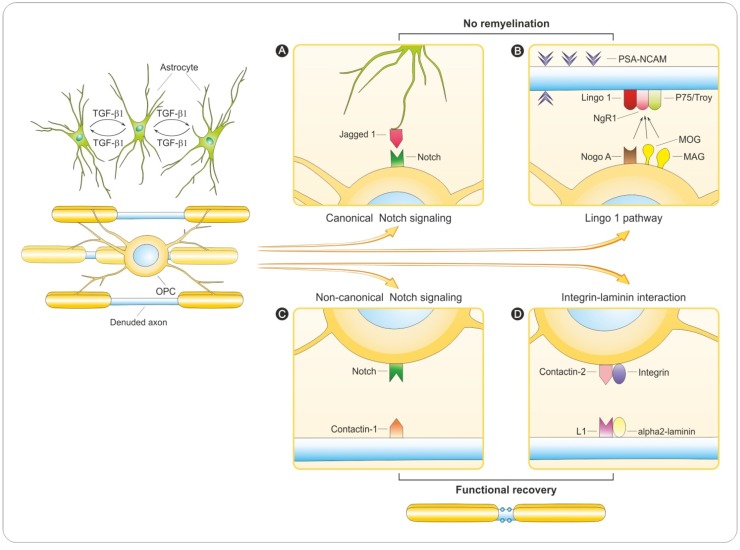Figure 4.
Hypothetical outcomes for demyelinated axon.Denuded axon impermissive for myelination. (A,B): remyelination failure and axonal death. Oligodendrocyte ensheathing. (C,D): remyelination leading to long-term neuroregeneration and functional recovery. (A) Transforming growth factor-β 1 (TGF-β1), secreted by resident microglial and astroglial cells, stimulates astrocytes in MS lesions to re-express the Notch ligand Jagged1 [121]. Contact-mediated activation of canonical Notch signaling by ligand Jagged 1 inhibits oligodendrocyte progenitor cells (OPC) differentiation and impermissive for proliferation [120]. (B) The denuded axon impermissive for myelination through surface expression of inhibitory molecules, such as PSA-NCAM [109], and interactions between axonal LINGO-1 binding to oligodendroglial Nogo-A [133,134,135] prevent further myelination. (C) Activation of a non-canonical Notch signaling pathway triggered by axonal ligands including F3/contactin-1 in OPC [123,124]. (D) Axonal laminin and L1 bind oligodendroglial integrin (and then dystroglycan receptor) and contactin-2 promoting oligodendrocyte survival and myelination [136]. Additional abbreviations: L1, axonal cell adhesion molecule; MAG, myelin-associated glycoprotein; MOG, myelin oligodendrocyte glycoprotein; NgR1; Nogo-receptor 1; OPC, oligodendrocyte progenitor cell; PSA-NCAM, polysialic acid-neural cell adhesion molecule.

